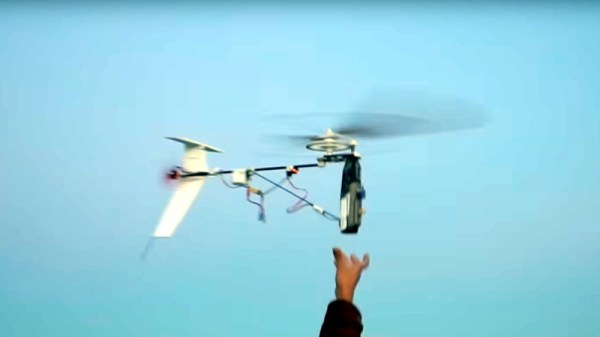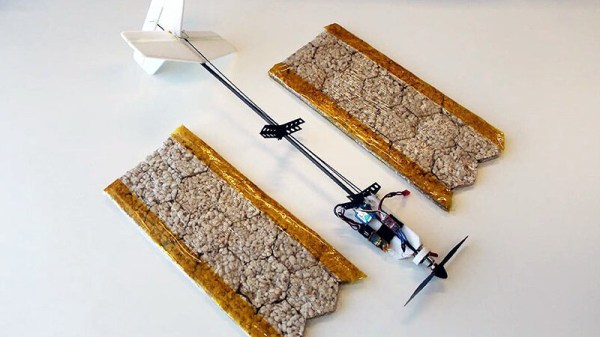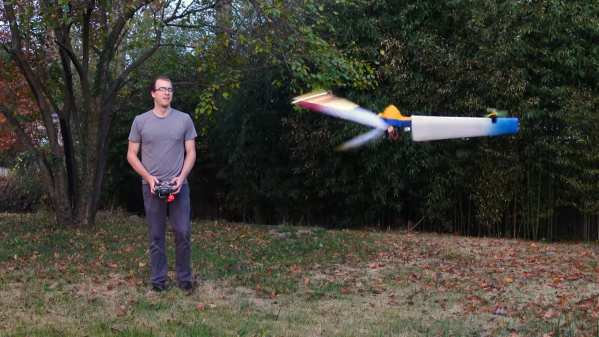If you regularly fly your drones outdoors, you’ve probably worried about getting your pride and joy stuck in a big tree at some point. But flying indoors doesn’t guarantee you’ll be safe either, as [Scott Williamson] found out. He once got his tiny 65 mm Mobula 6HD quadcopter stuck in a roof beam at an indoor sports complex, and had to set about a daring rescue.
The first job was recon, with [Scott] sending up another drone to survey the situation. From there, he set about trying to prod the stuck quadcopter free with a improvised lance fitted to the front of a larger drone. But this ended up simply getting the larger bird stuck as well. It eventually managed to free itself, though it was damaged severely when [Scott] caught it as it fell. As told to Hackaday, [Scott] thus decided he needed to build a mock-up of the situation at home, to help him devise a rescue technique.
In the end, [Scott] settled on a grappling hook made of paperclips. A drone lofted a long length of VHS tape over the roof beam, and he then attached the grappling hook from ground level. The VHS tape was then used to reel the hook up to the rafters, and snare the drone, bringing it back down to Earth.
It took some perseverance, but [Scott] ended up rescuing his tiny drone from its lofty prison. The part we love most about this story, though, is that [Scott] planned the recovery like a heist or a cave rescue operation.
Continue reading “Drone Rescue Uses VHS Tape And Careful Planning” →

















